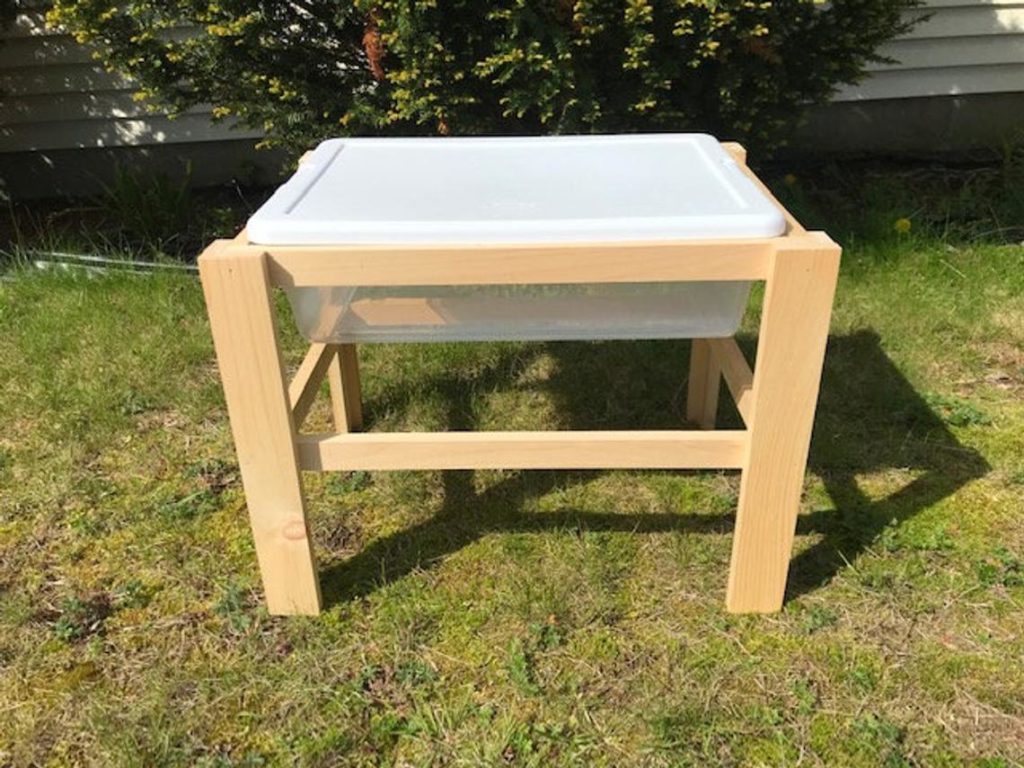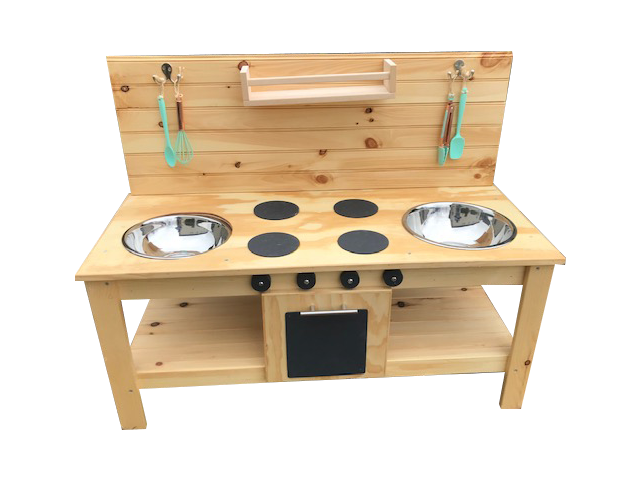
Disclosure: The Toyary does not engage in sponsored blog posts and only links to resources that we’ve personally vetted and recommend, and that align with our sustainability-focused mission. Some links in our posts may be affiliate links, which means we may receive a commission for purchases made through these links to support the work we’re doing. Whether you choose to use these links is up to you and at no cost to you.
Sensory play is an investment in your children that will have so many lifelong benefits while also entertaining your children for countless hours a year.” – Lauren Evans, The Monarch Studio
As parents, we generally know that sensory play is good for our children. We know by the way we see our children respond to different sensory experiences: the grins that arise when they first really set foot (or hand) in sand; the giggles that erupt when they’re tickled; the curiosity that peaks when they hear or play a new sound for the first time; and the joy that comes from their first forays into eating, then cooking, at home.
We don’t have to be child development specialists to know there’s growth taking shape behind this stimulation that we witness. But, it does help to understand some of the deeper benefits of sensory play that aren’t immediately apparent.
- Sensory play teaches the scientific method. While we usually hone in on the five senses of smell, taste, touch, sight, and hearing, it’s important to include body awareness and balance too. Play that engages these senses naturally encourages children to observe, hypothesize, experiment and make conclusions—all without us getting in the way!
- Sensory play helps us deal with complexity. Different sensory experiences are vital for a young brain’s sensory processing capabilities to develop. By building nerve connections in the brain, kids can complete more complex learning tasks (not to mention build vital skills for self-regulation).
- Varied sensory play improves our retention: The more senses that a child engages to do something, the more information they will learn and retain from that experience. We don’t grow out of this ability, either. The same holds true for us adults looking to better retain information.
These benefits are also important filters for us at The Toyary when it comes to choosing which play experiences to provide our members—and the more local, the better. For these reasons, we’re especially excited to kick off the first blog in our “Way to Play” series, which features local play makers and the experts behind them. If you’re a member of The Toyary, you already know how much we care about supporting more sustainable ways to play. We’re proud to include local play/toy makers in our toy library and to use our blog to make sure you know about them.
Why We’re Fans of The Monarch Studio
Based out of Martha’s Vineyard, The Monarch Studio is local to those of us in MA and handcrafts its sensory play items using high quality, non-toxic material. While it’s products resonate most with the 18-month to 6-year old crowd, there is no age limit to the appeal of it’s unique and beautiful mud kitchens, sensory bin stands, art tables, tool benches, and more. If you appreciate items more tailored to your style, they’ll even do custom orders. Hmm… adult-sized mud bar, anyone?
The Mud Kitchen Queen

If I can help parents get through the tough days of parenting and simultaneously help children develop amazing life skills, then I’ve done my job.
Lauren Evans, The Monarch Studio
When it comes to sensory play, there is perhaps no one more fitting to share sensory-building tips than the mud kitchen queen herself, Lauren Evans, owner of The Monarch Studio and creator behind a growing variety of indoor and outdoor sensory play furniture. While some of us delve into sensory play in the bathtub and at the dinner table, Lauren got into this business making sensory bin stands for her art classes and a mud kitchen for her then toddler.
Between balancing her growing business with two kids as a single mom, Lauren knows a thing or two about engaging children in development-focused sensory play, along with all that comes with building a lifestyle-based business oriented toward providing “muddies” with what they need to play and learn outdoors.
Six Pointers from the Sensory Play Pro
1. Start small.
According to Lauren (and verified by our own experience), sensory bins are a great way for families to start to incorporate sensory play into their children’s lives at a young age. She offers up a particularly useful approach for folks with younger infants, too: “[Sensory bins built into a stand] can even be used for tummy time by putting objects in the bin and putting the baby underneath it to look up at.”

2. Get creative with fillers.
In addition to glorious mud and sand, Lauren points out fillers for sensory engagement that most of us already have in our kitchen—rice, water, sand, dry beans, corn and salt, to name a few. If you’re up for getting your hands dirty too, consider whipping up some cloud dough or Oobleck. We’re obsessing these days over the variety of rainbow-colored sensory activities, like this easy rainbow spaghetti that we pulled together using food coloring and a Costco-sized box of pasta.
3. Consider a kit.
The options for sensory fillers are limitless, but this can also be overwhelming or impractical when you need something in a pinch (e.g., that short-notice conference call that you can’t get out of). “There are some wonderful shops that create sensory bin kits and I’d recommend purchasing a few of those to get started,” suggests Lauren. Lauren vouches for Just Imagine, a sensory kit provider in Rhode Island that she uses for her own kids’ mud kitchen and stand.
4. Invite others along.
When it comes to sensory play the more, the merrier. Anyone familiar (or tormented) with young sibling/friendship dynamics will appreciate that sensory play is non-competitive. In fact, Lauren suggests using sensory activities and products like hers across siblings or friends of a wide variety of ages for this reason.
5. Take it outside.
There is perhaps no better environment for sensory exploration and play than the outdoors. This need holds especially true in today’s world of virtual learning, connectivity and pandemic-fueled cabin fever. Lauren feels this inherently through her own kids and customers. “I think people really want to get their kids outside more, [particularly as] kids are spending so much time on screens and at home. Mud kitchens like ours provide hours upon hours of educational outdoor play. People also see the importance of the non-toxic aspect of sensory play.”
6. Adapt with st(age).
Inspired by her growing children and how customers are using her products, Lauren is always thinking about ways to evolve the sensory play experience. “For example, we are working on a science lab for children who are taking online STEM classes at home because my daughter was taking a class and I wanted to build her a little lab to experiment and make a mess in.” The ability to adapt opportunities for sensory play to your child’s developing needs and circumstances offers a level of customization that any parent can own.
With a little creativity, the opportunities to adapt sensory play experiences are endless. In The Monarch Studio’s case, we’re looking forward to seeing more mud kitchen accessories take shape, along with a mini picnic table, printable recipe cards and a planter that allows kids to grow their own flowers and herbs. After all, when you have a giant mud kitchen to play with, you can expect some hungry dolls, stuffed animals and super heroes to feed.
From One Parent to Another
Like many of our members and readers, Lauren’s a busy single mom to two young kids aged four and seven. How does she manage raising kids while building her mud kitchen empire? According to Lauren, it’s not for the faint of heart.

Make room to decompress. “I have learned that I can’t pull late nights every night. I need my rest to be a strong mom and businesswoman.”
Find ways to disconnect. “I’ve also learned that I need to put my phone/computer down and stop working and just be with my kids. I’m a better mom when I do that, and I’m better at my job when I do that.”
Try to divide your time: “I block off chunks of time in my day that are dedicated to just my kids and just to work.”
Getting Your Sensory Play On
Lauren’s an inspirational parent, craftswoman and sensory play entrepreneur working hard to provide fun and learning for the rest of us. Members of The Toyary can now reserve and borrow The Monarch Studio’s sensory bin below through our toy library collection.
If you’re interested in learning more about The Monarch Studio and their fabulous mud kitchens, including the fun ones below, you can check out their sensory play furniture here.
What are your favorite sensory play activities?
The beauty of sensory play is that it can be as simple or complex as you’d like to make it. DIY or not, we’d love to hear more about your favorite ways to engage little ones with sensory activities. Please let us know what you think in the comments below.






Leave a Reply